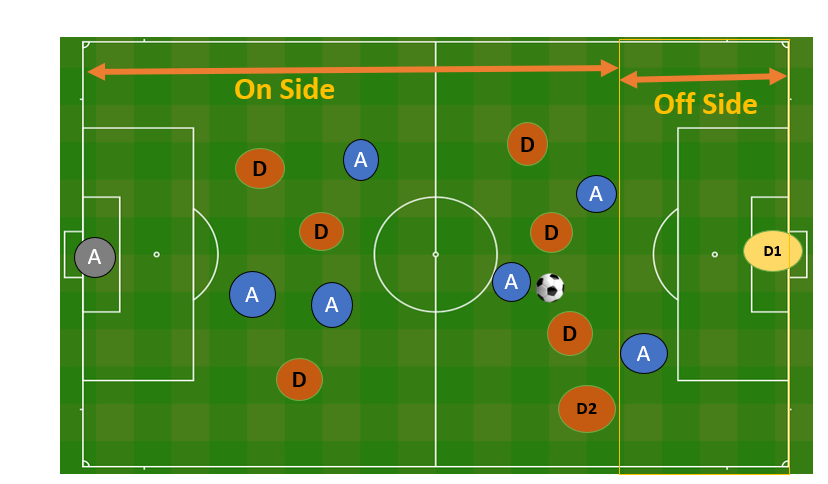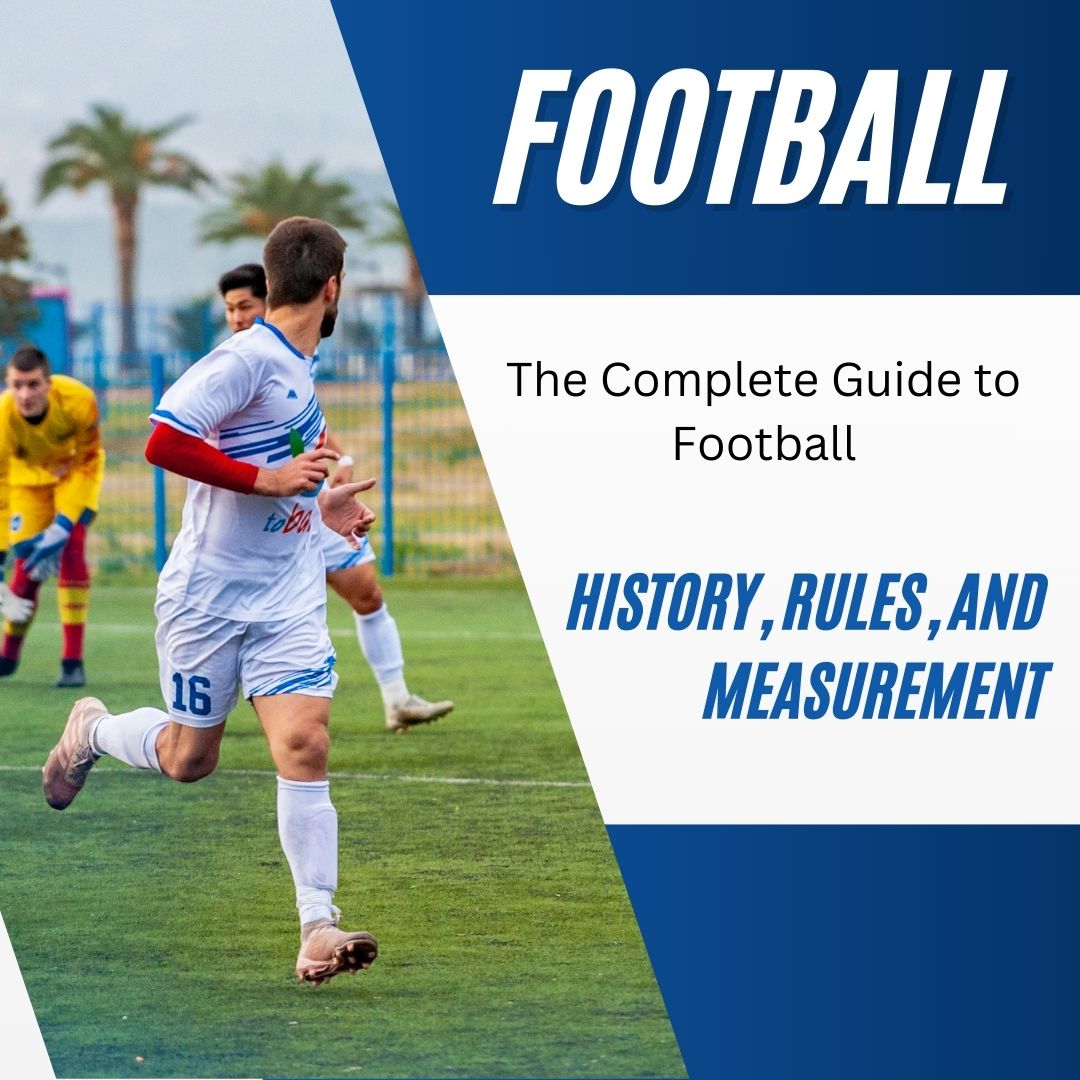Football: History, Field Measurement, Rules and Fouls
Football is one of the most popular sports in the world. A large number of people around the world like to play and watch this game. There are different opinions about when this game was originated. England is considered to be the originator of the type of football game we see today.
History of Football
Ancient Beginnings:
- Egypt: It is believed that the history of football begins in Egypt. Football was first played there, and in that country, football was played by kicking a ball-like object. In Egypt, it was known as “Harpastum.”
- Greece and Rome: This Egyptian game, played by kicking a ball-like object, was also popular in Rome and Greece where a similar game was played.
- China: In ancient times, football was known by many other names. However, the existence of this game was found in China between 300 BC and 500 AD under the name “Cuju”. This game involved kicking a leather ball through a small opening into a net.
The Birth of Modern Football
- Origin: England is the birthplace of modern football.
- Football spread in England in the 12th century.
- The first football club, Sheffield Football Club, was formed on 24 October 1857.
- The first football federation, the London Football Association, was formed in 1863.
- The first public rules of football were made in 1863.
- Formation of The Football Association–
- The FA: The Football Association (FA) was founded in England in 1863, establishing the “Laws of the Game.”
- FIFA : Federation International de Football Association was established in 1904 to oversee global competitions.
- First International Match–
- Scotland vs. England: The first official international match took place in 1872, ending in a 0-0 draw.
- The World Cup
- Inaugural Tournament: The first FIFA World Cup was held in 1930 in Uruguay, with the host nation winning the tournament.
When did football become a part of the Olympic Games and Asian Games?
- Olympic Game- Football was added to the Olympic Games at the 1900 Olympics in Paris, France.
2. Asian Game- Football was included in the Asian Games in 1951 in New Delhi, India.
Football Field Dimensions and Markings

- Overall Dimensions–
- Length: Length: Ranges from 100 to 130 yards (90 to 120 meters).
- Width: 50 to 100 yards (45 to 90 meters).
- Goal Area–
- Size: The goal area, or six-yard box, extends 6 yards (5.5 meters) from each goal post and 6 yards into the field.
- Purpose: It is the area where the goalkeeper usually operates and where goal kicks are taken.
- Penalty Area–
- Size: The penalty area, or 18-yard box, extends 18 yards (16.5 meters) from each goal post and 18 yards into the field.
- Purpose: This area is critical for penalty kicks and marks the zone where the goalkeeper can handle the ball.
- Goal Size–
- Width: 8 yards (7.32 meters).
- Height: 8 feet (2.44 meters).
- Penalty Spot–
- Distance: 12 yards (11 meters) from the goal line.
- Purpose: The spot from which penalty kicks are taken.
- Center Circle–
- Radius: 10 yards (9.15 meters).
- Purpose: Ensures that opposing players maintain the required distance during the kick-off.
- Corner Arc–
- Radius: 1 yard (1 meter).
- Purpose: Marks the area for corner kicks.
- Technical Area–
- Size: Generally extends 1 yard (1 meter) on either side of the substitute benches and 1 yard (1 meter) towards the field.
- Purpose: Designated for team coaches and substitutes during the match.
Essential Field Markings
- Touchlines and Goal Lines
- Touchlines: The long sides of the field.
- Goal Lines: The short sides where the goals are located.
- Halfway Line
- Position: Divides the field into two equal halves.
- Purpose: Marks the start of the game and restarts after halftime or a goal.
- Goal Area Lines
- Marking: Defines the goal area where goal kicks are taken.
- Penalty Area Lines
- Marking: Defines the penalty area where the goalkeeper can handle the ball and penalties are awarded.
- Penalty Arc
- Radius: A semicircle with a radius of 10 yards (9.15 meters) outside the penalty area.
- Purpose: Helps position players during a penalty kick, ensuring they stay at a distance.
The Football:
- Shape: Spherical
- Material: Leather or other approved materials
- Circumference: 68-70 cm (27-28 inches)
- Weight: 410-450 g (14-16 oz)
- Air Pressure: 0.6-1.1 kg/cm² at sea level
Rules of Football
Team Composition and Player –
- Teams: Each team consists of 11 players, including 1 goalkeeper.
- Total Team Players: 18
- Minimum Players: A match cannot start if a team has fewer than 7 players.
Substitutions
- Initially, teams were allowed 3 substitutes, including the goalkeeper. The current rules permit up to 5 substitutes.
Player Equipment
- Mandatory Gear: Shirt with sleeves, shorts, socks, shin guards, and appropriate footwear. Goalkeepers may wear tracksuit bottoms.
- Jewelry: Forbidden and must be removed before play.
Match Duration
- Standard Match Time: 90 minutes, divided into two halves of 45 minutes each.
- Half-time: 15 minutes
- Tie Resolution:
- 30 minutes of extra time, divided into two halves of 15 minutes.
- Penalty shoot-out if the tie persists, with 5 penalties each, followed by sudden death if needed.
Determining the Match Outcome
- Goal: The team scoring the most goals wins.
- Draw: A match ends in a draw if both teams score an equal number of goals.
- Other Rules: Tiebreakers may involve the away goals rule, extra time, and penalty kicks to determine the winner.
Starting and Restarting Play
- Kick-off: Initiates both halves and extra time, and restarts play after a goal.
- Coin Toss: Determines which goal to attack in the first half or who takes the kick-off.
Ball In and Out of Play
- In Play: The ball remains in play as long as it stays within the field boundaries.
- Out of Play: The ball is considered out of play when it completely crosses either the goal line or the touchline.

Fouls and Misconduct
- Direct Free Kick Fouls: Include actions like kicking, tripping, jumping at, charging, striking, biting, spitting, holding, pushing, and handling the ball.
- Indirect Free Kick Fouls: Include offensive language, preventing the goalkeeper from releasing the ball, and dangerous play. Goalkeeper violations include holding the ball for more than six seconds, handling the ball twice in succession, and deliberately wasting time.
- Offside Rule: A player is considered offside if they are positioned closer to the opponent’s goal line than both the ball and the second-last defender at the moment the ball is played to them, except when in their own half or level with the second-last opponent. The offside rule does not apply during a goal kick, throw-in, or corner kick.


Cards and Penalties
- Yellow Card: Issued for offenses such as dissent, unsporting behavior, and delaying the restart of play.
- Red Card: Given for serious foul play, violent conduct, foul language, or receiving a second yellow card.
Free Kicks
Free kicks are awarded for a variety of fouls and infractions. They are divided into two types:
- Direct Free Kick: This allows the player to score directly from the kick without the ball touching another player. It is awarded for serious fouls like kicking, tripping, or charging an opponent, and handling the ball.
- Indirect Free Kick: This requires the ball to touch another player before a goal can be scored. It is awarded for less severe offenses such as dangerous play, obstruction, or a goalkeeper handling the ball for more than six seconds.
The ball must be stationary when kicked, and opposing players must be at least 10 yards away from the kicker.
Corner Kicks
- A corner kick is awarded when the ball crosses the goal line, excluding the area between the goalposts, last touched by a defending player without resulting in a goal.
- The kick is taken from the corner arc nearest to where the ball went out of play.
- Corner kicks offer excellent scoring opportunities due to their proximity to the goal and are often used to deliver high crosses into the penalty area where attacking players aim to head or volley the ball into the net.
Goal Kicks
- A goal kick is awarded when the ball crosses the goal line, excluding the area between the goalposts, last touched by an attacking player.
- The goal kick is taken from anywhere within the goal area by the defending team.
- All players on the opposing team must remain outside the penalty area until the ball has been put into play.
- The goal kick is a method to restart play and typically aims to move the ball up field to regain possession.
Penalty Kicks
- A penalty kick is awarded for specific fouls committed by the defending team within their own penalty area, such as deliberate handling of the ball or fouls against an opponent.
- The kick is taken from the penalty mark, 12 yards from the goal line, with only the goalkeeper allowed to defend.
- The goalkeeper must remain on the goal line until the ball is kicked, while all other players must stay outside the penalty area.
- The penalty kick is a critical scoring opportunity, often influencing the outcome of a match.
Throw-ins
- Awarded: When the ball crosses the touchline, awarded to the opponents of the player who last touched the ball.
- Opponents must stand at least 2 meters (2 yards) from the point on the touchline where the throw-in is taken.
Match Officials
- Team: Includes 1 referee, 2 assistant referees, 2 additional assistant referees, 1 reserve assistant referee, and a Video Assistant Referee (VAR) along with 1 Assistant VAR (AVAR).
Football is a game of skill and strategy, regulated by its rules and measurements. Familiarity with these basics enhances the enjoyment and understanding of the game, whether you are playing, coaching, or cheering from the sidelines.
Watch video on this topic on youtube.
Test your knowledge with additional quizzes here.
Download the full guide in PDF format here.


